Peking University holds the "Survey of Medical Assessment for Robot Technology (SMART)" Symposium
The Symposium on the Survey of Medical Assessment for Robot Technology (SMART), jointly organized by the Institute of Global Health and Development (IGHD) at Peking University and the China Association of Medical Equipment, was held on May 19, 2023. The symposium focused on "Exploring the Value and Technological Evaluation of Medical Surgical Robots" and featured keynote speeches and roundtable discussions. Nearly a hundred guests, including experts from academia, government, clinical practice, and industry both domestically and internationally, as well as faculty and students from Peking University, participated in the event.
Part One: Opening Ceremony
The opening ceremony of the symposium was chaired by Professor Xu Ming, Director of the Department of Global Health at the School of Public Health, Peking University, and Associate Dean of IGHD.

Professor Qiao Jie, Executive Vice President of Peking University and Dean of the Medical School, and an academician of the Chinese Academy of Engineering, delivered a welcome speech. Following her, there were speeches from several distinguished guests: Academician Wang Chen, President of Peking Union Medical College, Vice President of the Chinese Academy of Engineering; Liu Qian, President of the Chinese Hospital Association and former Vice Minister of the National Health Commission; Professor Liu Guoen, Changjiang Scholar Distinguished Professor at Peking University, Director of the Global Health Development Institute, and a member of the Chinese Academy of Medical Sciences; and Hou Yan, Chairman of the China Association of Medical Equipment and former Director-General of the Planning and Information Department of the National Health and Family Planning Commission.
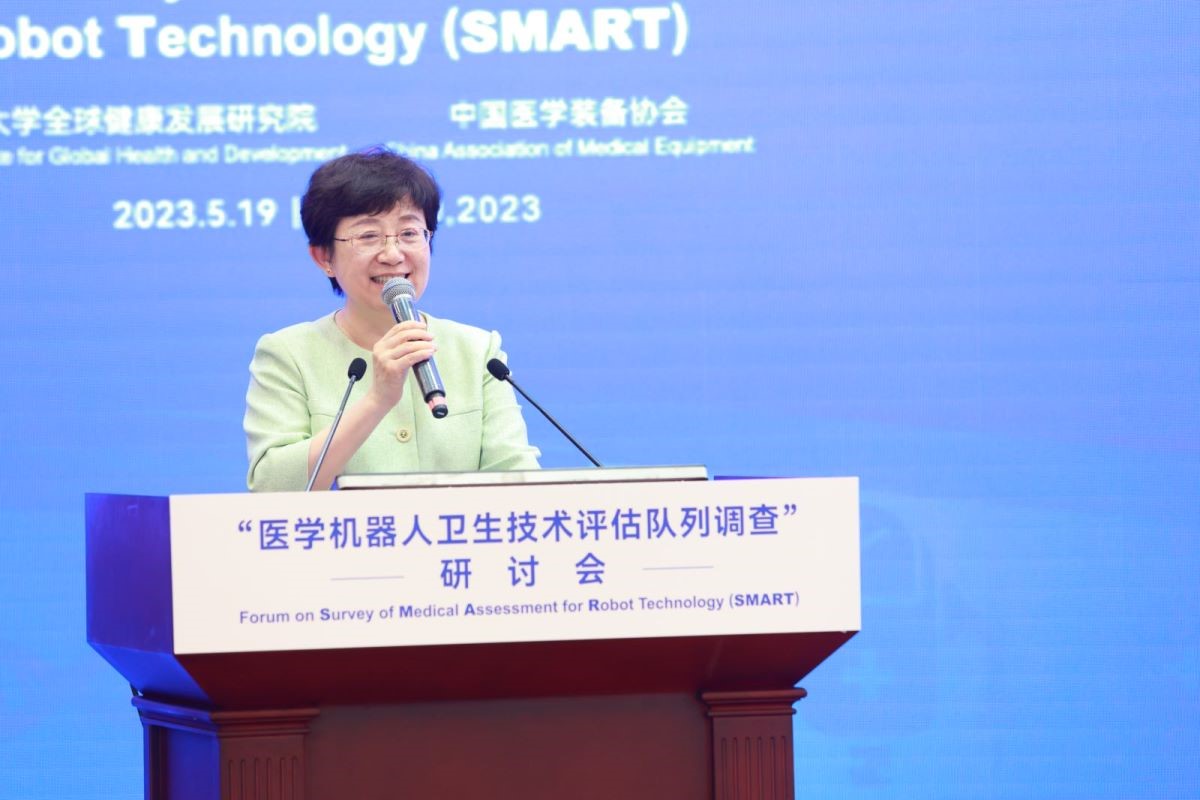
Professor Qiao warmly welcomed the experts, scholars, and industry leaders participating in the symposium on behalf of Peking University. She expressed sincere gratitude to the National Health Commission, the Ministry of Industry and Information Technology, experts from domestic and foreign partner institutions, various associations, societies, and medical technology enterprises for their long-term support and assistance to Peking University. In an era of unprecedented global changes, especially during the post-pandemic period, public health development has encountered strategic opportunities and significant challenges. The global technological revolution and industrial transformation are accelerating, with the new generation of information technology characterized by digitization, networking, and intelligence permeating various industries. Professor Qiao Jie emphasized that medical robots represent the forefront of technological innovation in the healthcare sector. Their technological evaluation can sustainably empower the transformation and upgrading of the medical and health sector, promote the overall improvement of clinical diagnosis and treatment, and enhance public health governance. She expressed the hope that IGHD and the Medical School of Peking University would collaborate to establish an interdisciplinary platform, fostering openness, integration, mutual benefit, and win-win cooperation to comprehensively build an international academic community.

Academician Wang Chen believed that SMART is a forward-looking research initiative dedicated to addressing significant real-world medical issues professionally. He emphasized that it will provide valuable and meaningful data from various perspectives such as economics, social factors, and healthcare policy formulation. Although the research will face scientific challenges in experimental design and influencing factors, requiring substantial time, effort, and intelligence, he expressed confidence that under the leadership of Director Liu and with the strong support of relevant experts, the research will yield excellent results. Focusing on the evaluation of medical robots, Dr. Wang further emphasized that the healthcare industry is not merely a supportive and service-oriented social endeavor but a fundamental social cause that profoundly affects national prosperity and people's ultimate interests. He believed that it is essential to adhere to economic principles and extended his hopes for the success of SMART.
President Liu Qian believed that the convening of the symposium was necessary and timely. With the emergence of new formats and models in the digital economy, which will have a significant impact on economic growth and social services, the application and development of medical robots as carriers of digital technology will also impose new requirements on the existing governance system. It also involves various disciplines, technologies, and businesses. The evaluation of inspection and treatment robots differs from traditional drug evaluation models, as there are no clear and direct technical means, necessitating further exploration and research. President Liu points out that digital application technology has the characteristic of the innovation scene. For example, the transition from taxis to ride-hailing services is a transformation of service models using digital technology to provide users with higher quality services. He emphasizes that the medical robot innovation scene deserves our attention and reflection. This evaluation research serves as an important and urgent task for serving the new era, situations, and developments. It is a highly professional and innovative task. The Chinese Hospital Association will vigorously support and promote this project to better serve patients.
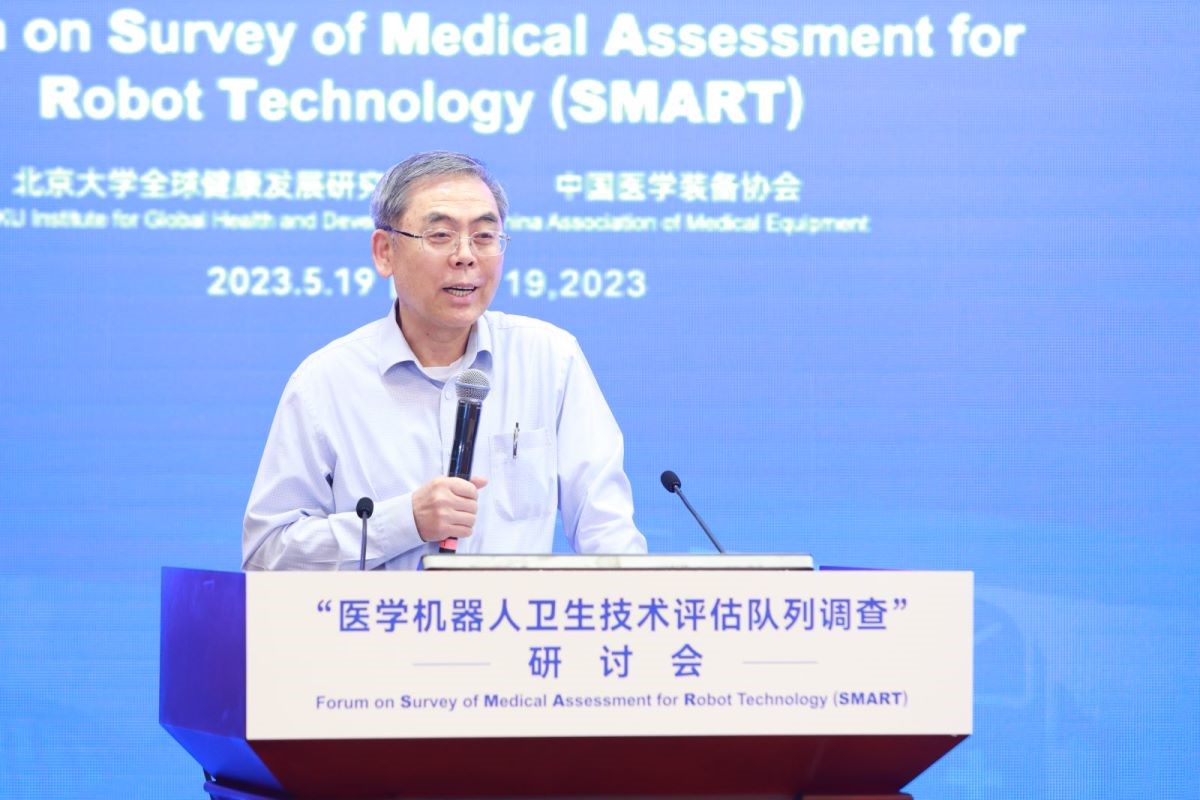
Director Liu Guoen expressed his gratitude to the experts who took time to participate in the symposium and provided a systematic introduction to the background of the project. With artificial intelligence, machine learning, and other technologies becoming key tracks for cooperation, competition, empowerment, and development among countries, data has become a new production factor that countries increasingly value. Continuously upgraded digital means such as cloud computing and 5G communication empower and facilitate the digitization of pharmaceutical research and clinical medicine, further assisting clinical doctors in safeguarding people's health. Director Liu pointed out that the key condition for promoting innovation in modern medical technology is long-term investment. A fair and effective reasonable return is an important factor in promoting sustainable investment. Medical expenditure growth exceeds economic growth rates in all countries. Supporting health insurance payment decisions based on health economic evaluations of new medical methods has become a necessary option for health insurance policies in various countries. However, how to support the standardized and effective payment of medical devices, including innovative means such as medical robots, based on standardized and scientific health economic evidence still faces enormous challenges. The difficulty lies in the lack of a systematic, long-term, and scientific big data comparative basis. Director Liu emphasized that SMART is an extremely complex and challenging systems engineering projects. He looks forward to experts at the symposium providing guidance and support for the project’s research design.
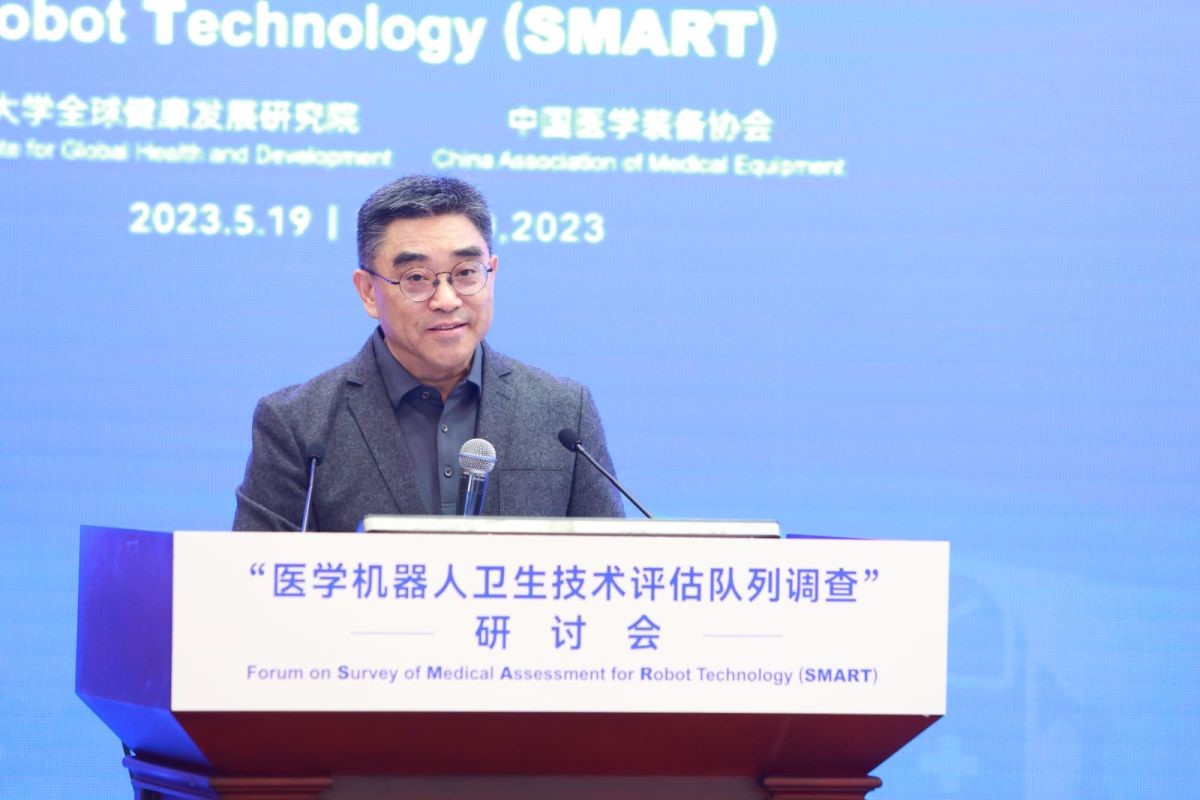
Chairwoman Hou Yan pointed out that medical robots are important products that combine high-end manufacturing and modern medical technology. The expanding application scenarios of medical robots are changing medical behaviors and service models, gradually becoming effective means to access high-quality medical resources, improve clinical medical safety levels, and enhance patient satisfaction. They also drive continuous innovation in the industry. She emphasized that as a new field of medical equipment innovation, medical robots demonstrate new dynamics and advantages of development. Conducting technology assessments of medical robots is of great significance for the development of both demand and supply sides. It requires strong support and coordinated cooperation from all parties. She introduced that the Chinese Medical Equipment Association is a platform for medical-industrial collaboration and integrated innovation, dedicated to improving the service capabilities of medical and health institutions and promoting the development of the medical equipment industry. The association will fully leverage the advantages of experts and enterprises, align supply and demand, deepen cooperation with IGHD, and jointly promote the SMART project. They will implement detailed plans, strengthen project and data security management, and provide a Chinese solution based on the value-based medical concept, contributing to the development of medical robots in China and the world.

Part Two: Launch Ceremony of the "SMART China Research Network"
Dr. Sun Xiaowei, Vice Chairman of the Chinese Medical Equipment Association and Chief Physician of Peking University First Hospital, presided over the launch ceremony. The following individuals also took the stage to launch the "SMART China Research Network" for the evaluation of medical robot health technology.
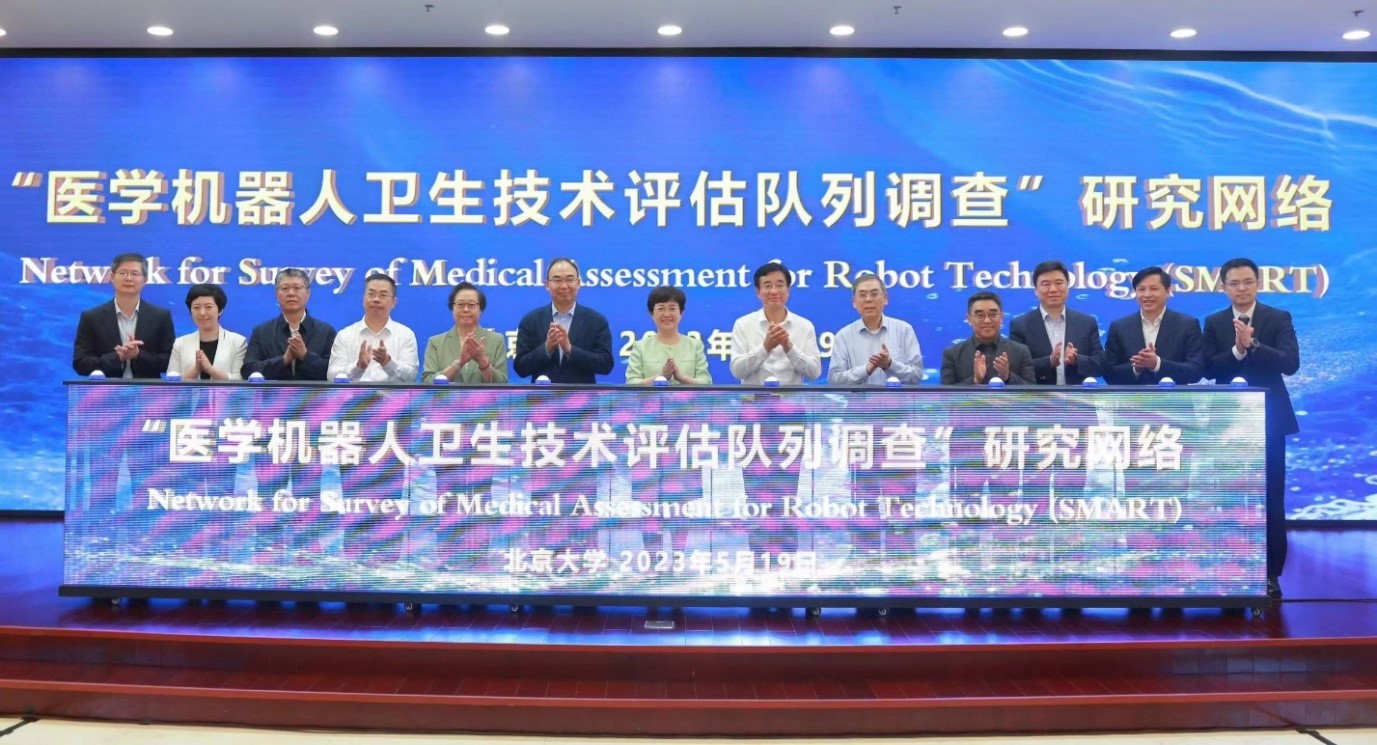
· Academician Qiao Jie, Executive Vice President of Peking University and Dean of the Medical School
· Academician Wang Chen, President of Peking Union Medical College, Academician Wang Jun, President of Peking University People's Hospital
· President Liu Qian of the Chinese Hospital Association
· Professor Liu Guoen, Director of the Institute for Global Health and Development
· Chairwoman Hou Yan of the Chinese Medical Equipment Association
· Director Liu Rong of the Hepatobiliary Pancreatic Surgery Department of the First Medical Center of the 301 Hospital
· Zhang Guojun of Beijing Children's Hospital, Secretary of the Party Committee
· President Zhang Hongjia of Beijing Anzhen Hospital
· Director Zhang Xiaoping of the Urology Department of the Affiliated Union Hospital of Huazhong University of Science and Technology Tongji Medical College
· Deputy Director Liang Xiao of the Qiantang Branch of the Affiliated Shao Yifu Hospital of Zhejiang University School of Medicine
· Deputy Director Jin Jiabin of the Department of General Surgery of the Affiliated Ruijin Hospital of Shanghai Jiao Tong University School of Medicine, and others jointly
Part Three: Keynote Speeches
The keynote speeches were moderated by the Associate Dean of the School of Economics at Peking University and Vice Dean of the Global Health Development Research Institute at Peking University. Seven senior experts from China, South Korea, Japan, India, and the United Kingdom shared insights on the development, application, and status of technology assessment of medical robots.
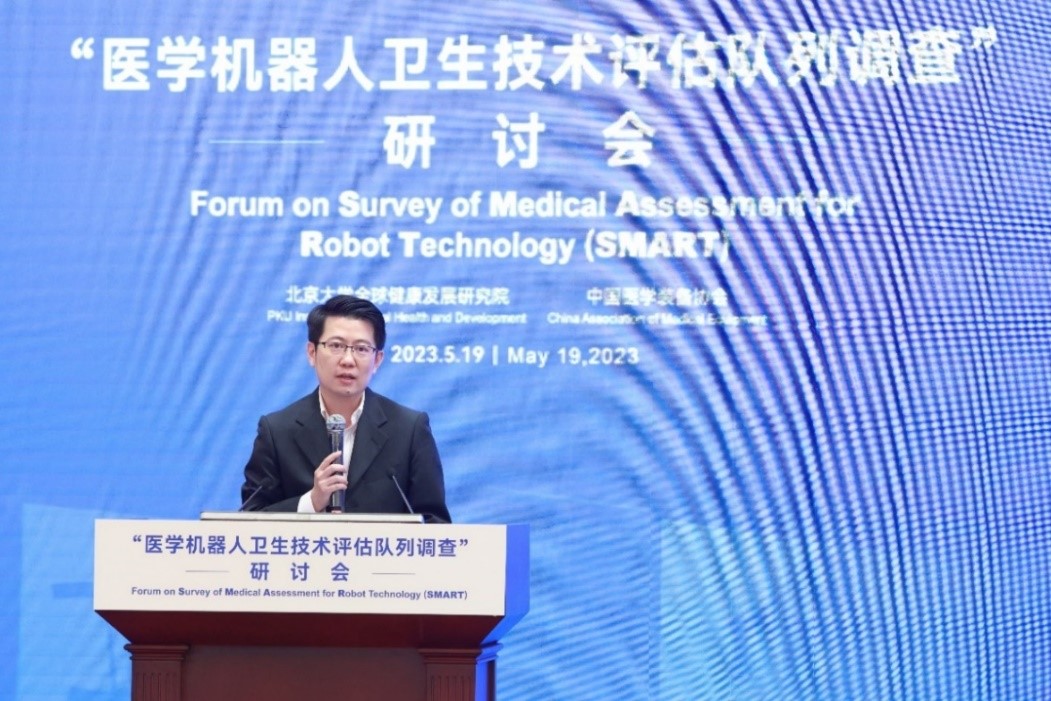
Director Liu Rong, Director and Chief Physician of the Department of Hepatobiliary Pancreatic Surgery at the First Medical Center of the Chinese PLA General Hospital, presented a report on the trends, advent, and challenges of robotic surgery. He proposed that the future development of robotic surgery lies in the integration of artificial intelligence with robotic surgery. He believes that surgical robots, intelligent navigation, and automatic control are essential components of intelligent surgery.
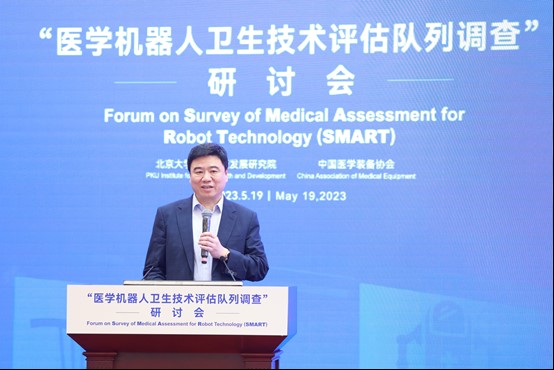
Anastasia Chalkidou, Deputy Director of the Medical Technologies Evaluation and Interventional Procedures Program at the National Institute for Health and Care Excellence (NICE) in the United Kingdom, shared insights on the lifecycle approach to assessing medical technologies.
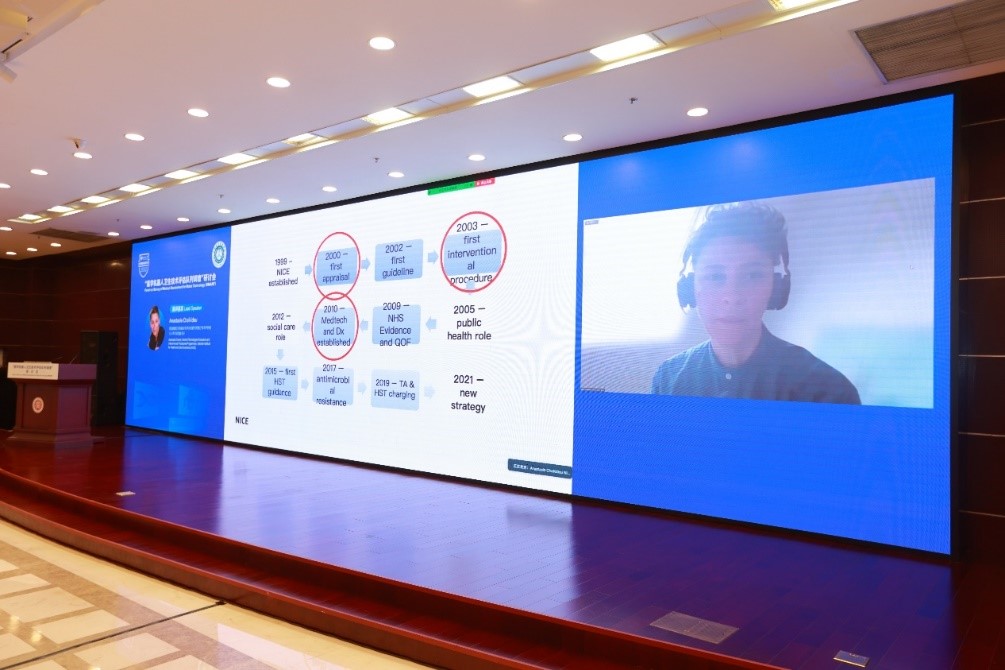
Scott Tackett, Vice President of Global Market Access and Value Development at Intuitive Surgical, shared insights on the value and economics of robot-assisted surgery.
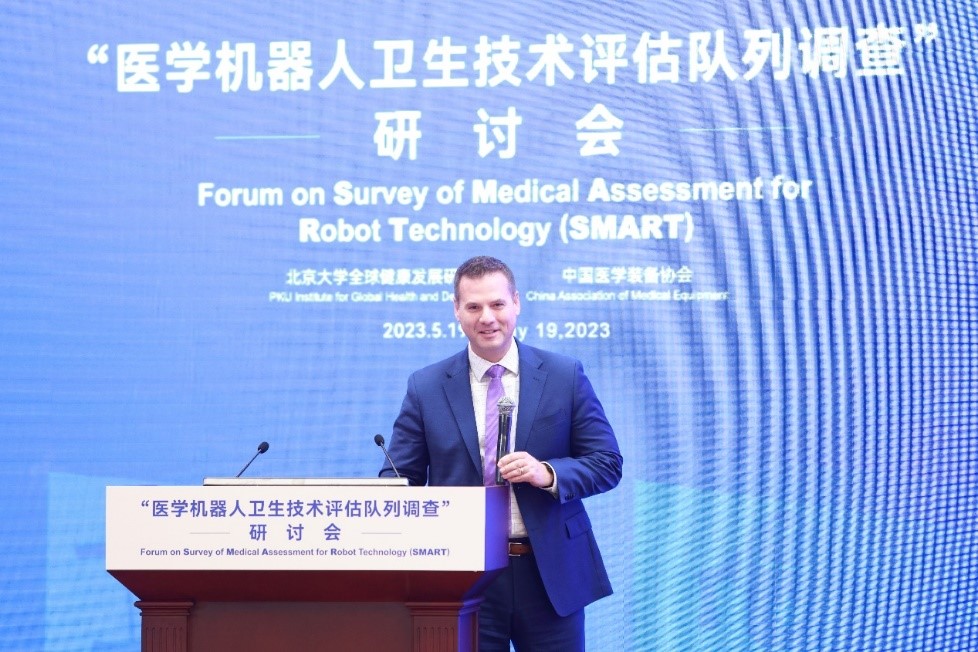
Professor Jiao Bingli, from the School of Electronics Engineering at Peking University and Director of the Ministry of Education Engineering Research Center for Mobile Digital Hospital Systems, compared artificial intelligence with robotics. He pointed out that artificial intelligence operates within the realm of learning, and the input of innovation, simplification of functions, discovery of functions, and tacit knowledge is worth questioning.

Professor Chirantan Chatterjee from the Sussex Business School at the University of Sussex conducted a study based on electronic medical record data of two common retinal diseases, diabetic macular edema and retinal vein occlusion. The study explored how a new OCT angiography (OCTA) technology replaced existing imaging techniques and benefited patients in a non-profit setting.
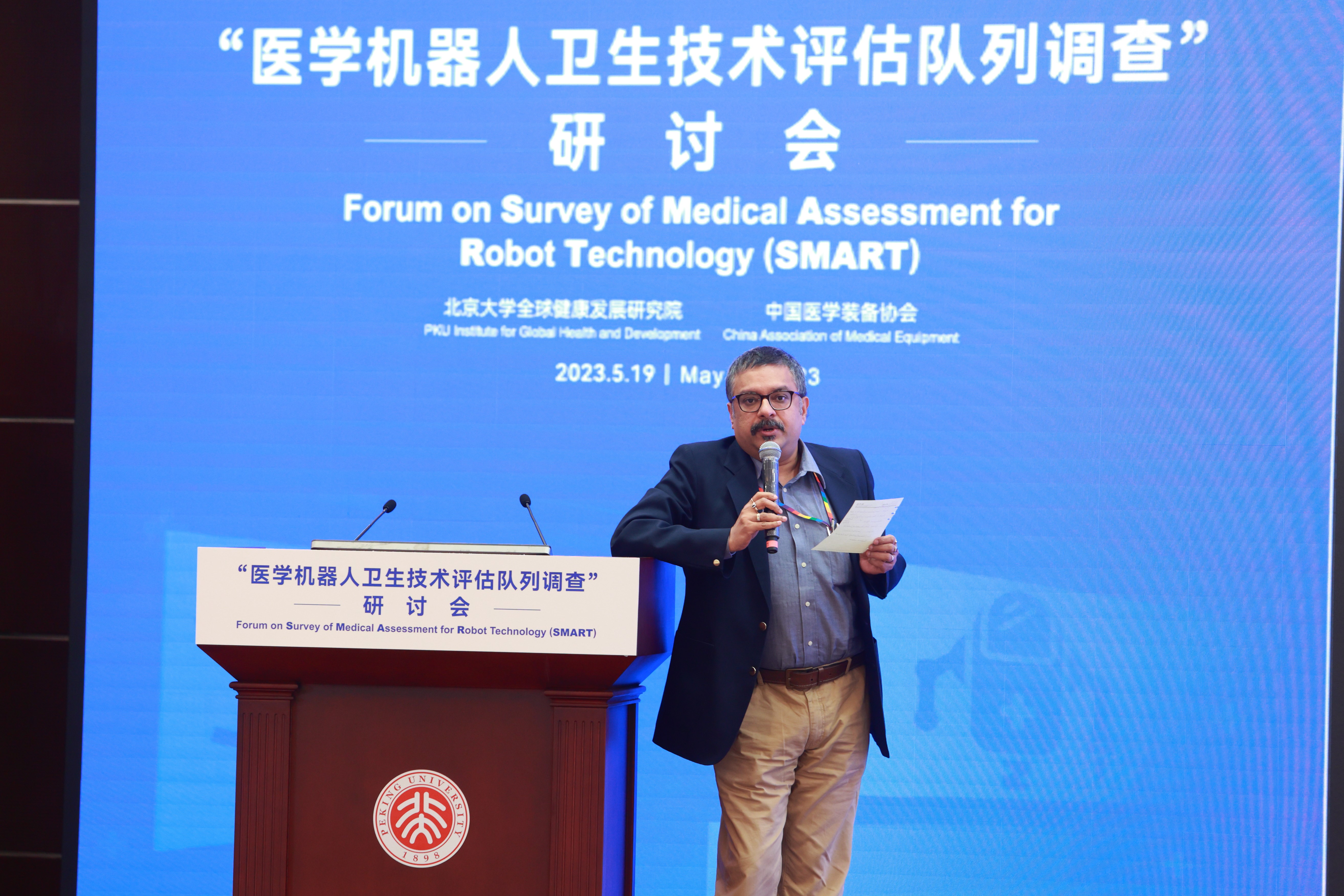 Ataru Igarashi, Research Fellow at the Institute of Health and Global Policy, Associate Professor of Public Health at Yokohama City University School of Medicine, and Visiting Associate Professor of Pharmaceutical Policy Studies at the Graduate School of Pharmaceutical Sciences, University of Tokyo, presented an overview of Japan's healthcare service system and the value of innovation. Additionally, he conducted a comparative analysis of the cost-effectiveness of robot-assisted laparoscopic surgery and da Vinci surgery.
Ataru Igarashi, Research Fellow at the Institute of Health and Global Policy, Associate Professor of Public Health at Yokohama City University School of Medicine, and Visiting Associate Professor of Pharmaceutical Policy Studies at the Graduate School of Pharmaceutical Sciences, University of Tokyo, presented an overview of Japan's healthcare service system and the value of innovation. Additionally, he conducted a comparative analysis of the cost-effectiveness of robot-assisted laparoscopic surgery and da Vinci surgery.
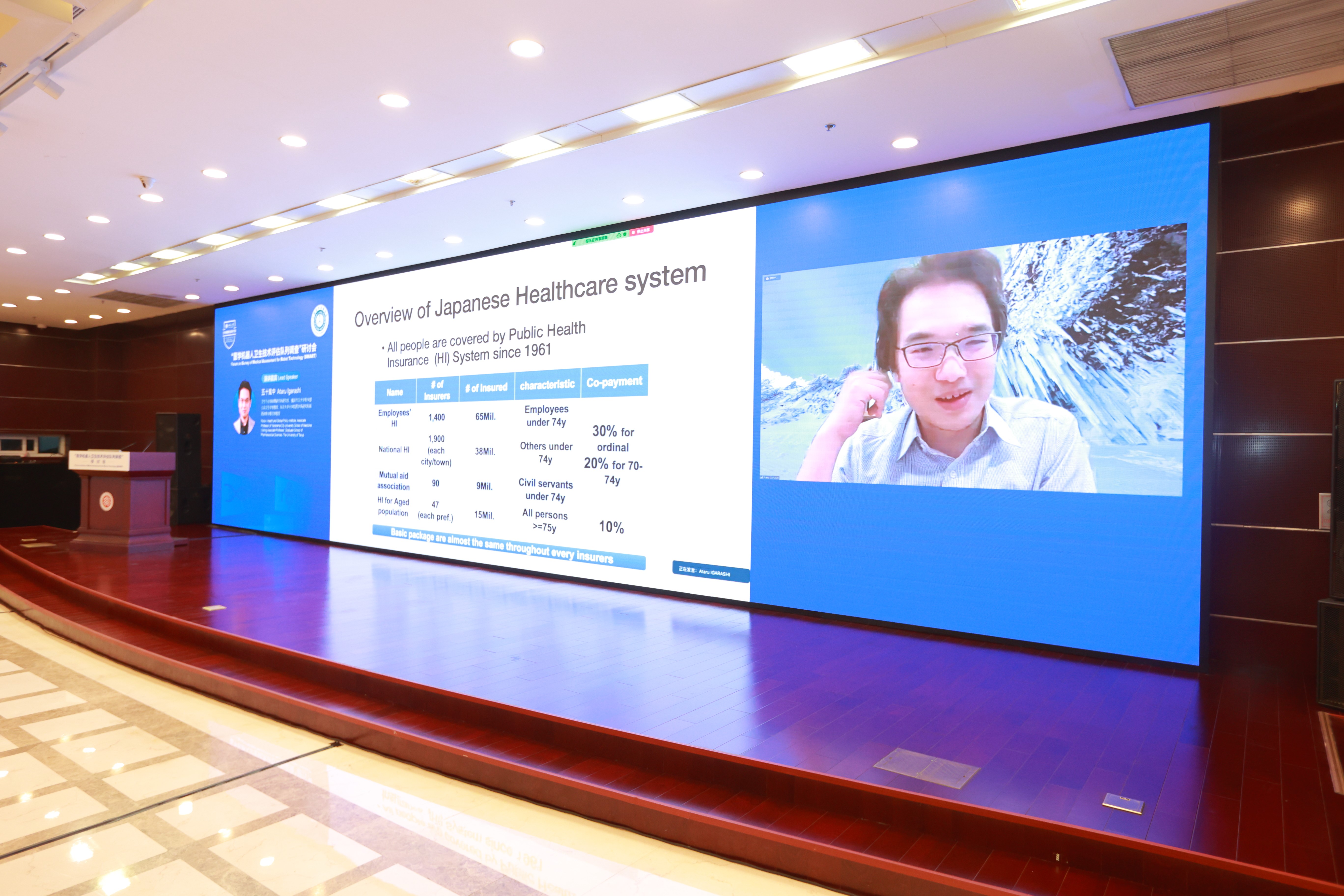
Jae Kyung Suh, Associate Researcher at the National Evidence-based Healthcare Collaborating Agency (NECA) of South Korea, conducted a systematic review to analyze the safety and effectiveness of robot-assisted surgery in South Korea compared to traditional surgery methods.
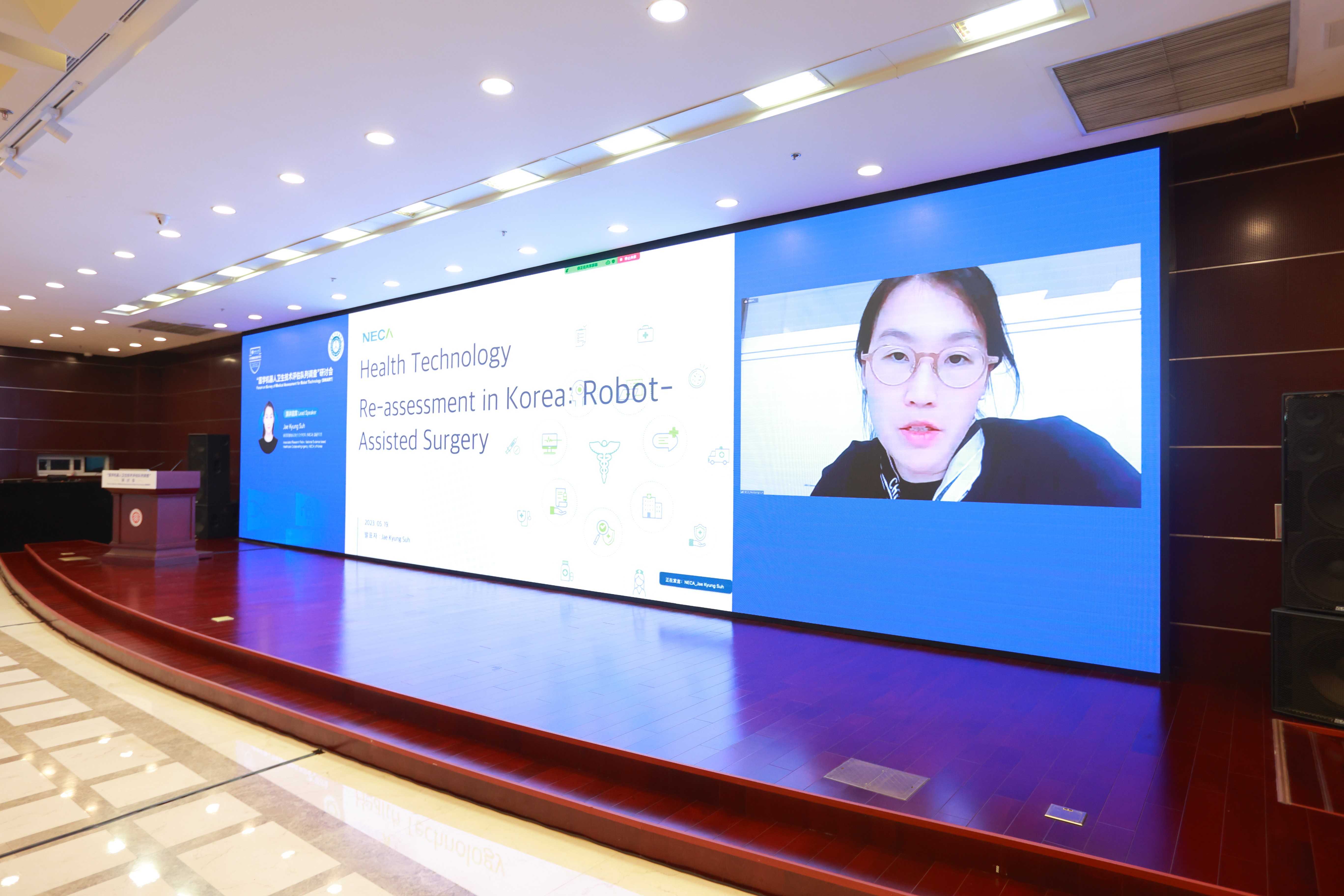
Part Four: Roundtable Discussions
Dr. Wang Jun, President of Peking University People's Hospital, took the lead in the discussion, emphasizing the importance of adaptability, safety, reliability, and efficacy. He pointed out that it was necessary to convene this expert symposium, as every technology has its benefits and drawbacks. Dr. Wang summarized the advantages and disadvantages of medical robotics based on different diseases. Professor Lee Tsu-De, former Chairman of Taipei Medical University, highlighted the fundamental principle of assessing medical robots: "How to recognize the value of medical services provided by medical robots based on the price paid."


Following that, Professor Liu Guoen raised three questions for the roundtable discussion with the attending guests:
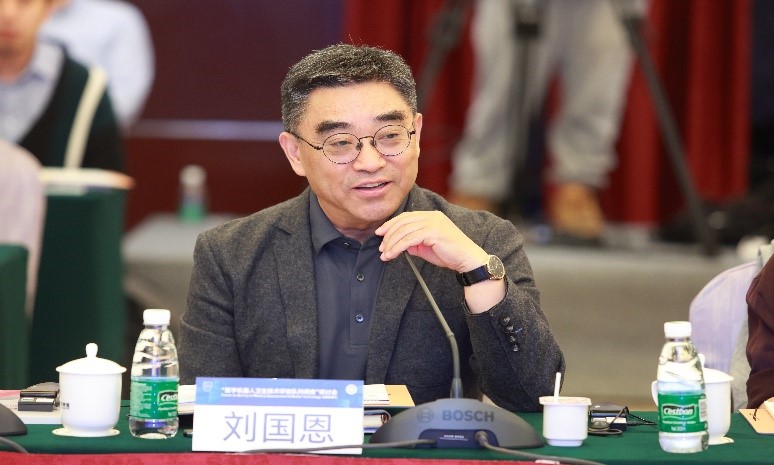
1) Is the Survey of Medical Assessment for Robot Technology (SMART) worth conducting?
2) If it is worth conducting, what are the biggest challenges that may be encountered during the implementation process?
3) From the perspective of research design, how can we maximize efforts to mitigate the biggest challenges?
The other participating experts actively shared their viewpoints on the three questions raised and proposed effective suggestions. Some key points included the importance of ensuring randomization in population selection for randomized controlled trials (RCTs), potential issues that may arise in cohort studies, and the need to differentiate between different disease types in research design.
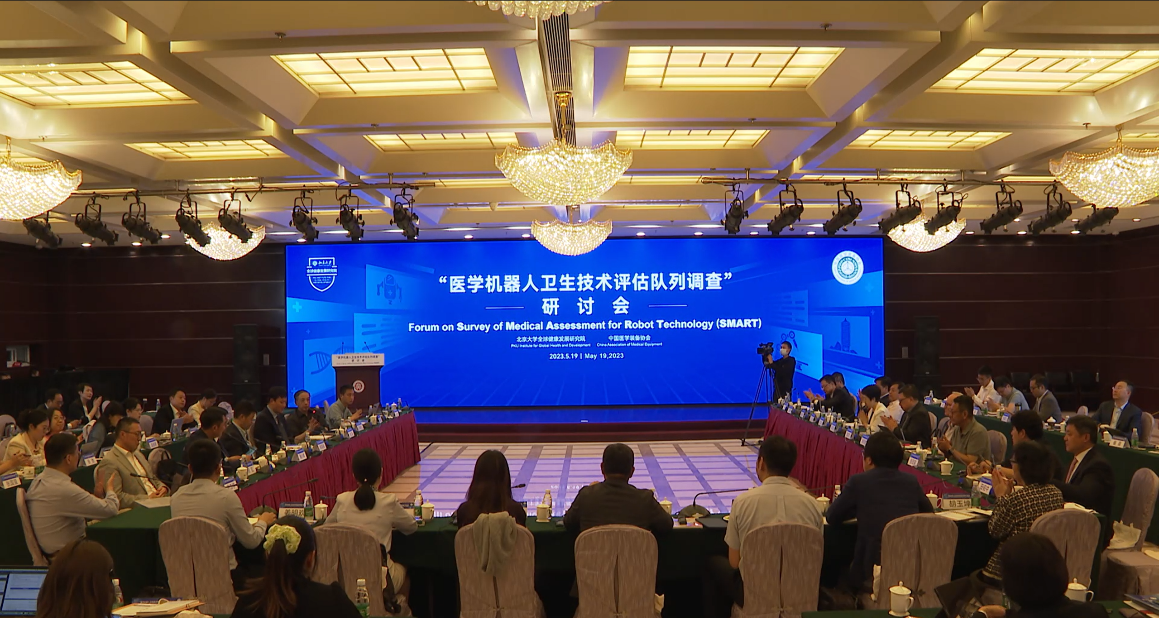
For example, Associate Professor Xu Qiang, Assistant Director of the Department of General Surgery and Member of the Medical Committee at Peking Union Medical College Hospital affiliated with the Chinese Academy of Medical Sciences, pointed out that when conducting RCTs for laparoscopy and robotics, consideration should be given to the coverage of the medical insurance system, and the main challenge may lie in data acquisition.
Director Zhang Xiaoping, Director of the Department of Urology at Tongji Medical College affiliated with Huazhong University of Science and Technology and Director of the Urology Research Institute at Tongji Medical College affiliated with Huazhong University of Science and Technology, emphasized that medical robots should not only match the department but also match the type of disease, and attention should be paid to their safety and cost-effectiveness during the matching process.
Dr. Jin Jiabin, Deputy Chief Physician in the Department of General Surgery at Ruijin Hospital affiliated with Shanghai Jiao Tong University School of Medicine, pointed out that medical robot companies are evolving rapidly and have a short learning curve, allowing surgeons to master and apply them in a relatively short period.
The successful convening of this inaugural launch event signifies the establishment of the first "Medical Robot Healthcare Technology Assessment Queue" Chinese Research Network. The aim is to build a globally influential real-world research platform for medical robots, enhance the level of healthcare technology assessment for medical robots in China, and provide scientific evidence for optimizing the application of medical and health technologies and healthcare payment policies.
(Interpreted by Waverly Shi)